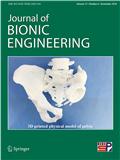
仿生工程学报(英文版)(Journal of Bionic Engineering) 知网目次万方目次维普目次
- CSCD
- 科核
- EI(中国2024)
- 主管单位:
中华人民共和国教育部
- 主办单位:
吉林大学
- 国际刊号:
1672-6529;EISSN2543-2141
- 国内刊号:
22-1355/TB
- 学科分类:
- 字数:
8000-22000
- 有无基金:
/有基金 100.0%
- 周期:
CN外文-双月刊
- 特殊属性:
第一批认定学术期刊,外文期刊
- 电话:
0431-85095180;85094074
- 邮箱:
fsxb@jlu.edu.cn
- 复合因子:
0.774
- 综合因子:
0.553
- 收录:
知网目次,万方目次,维普目次
- 级别:
CSCD,科核,EI(中国2024)
期刊简介
《仿生工程学报》期刊已被查看: 次
更新频次
单位占比
一作占比
/有基金-100.0%投稿指南
1、投稿方式:在线投稿。
2、官网网址:http://jbe.jlu.edu.cn/
https://link.springer.com/journal/42235
3、投稿系统:
https://www.editorialmanager.com/jben
4、出刊日期:双月刊,逢单月出版。
2023年8月24星期四
《仿生工程学报(英文)》投稿方式
【官网信息】
Submit manuscript:
https://www.editorialmanager.com/jben/default.aspx
For inquiring the status of manuscript, please send email to:
fsxb@jlu.edu.cn
《仿生工程学报(英文版)》投稿指南
【官网信息】
Author Guideline
AIMS AND SCOPE
The
Journal of Bionic Engineering publishes original research papers and
reviews on all aspects of bionic science and engineering including
fundamental understandings of animals and plants for bionic engineering,
such as locomotion and behaviors of animals, structures, composites,
morphology and physical properties of plants and natural materials,
applications of such understandings in engineering, technology and
designs.
The
journal aims to promote research and provide a platform for
communication of novel ideas, theories and technologies in bionic
science and engineering.
GUIDE FOR AUTHORS
Submission of manuscripts
Submission
of an article implies that the work described has not been published
previously and is not under consideration for publication elsewhere
(except in the form of an abstract or academic thesis or presentation in
conference).
Upon
acceptance of an article, authors will be asked to transfer copyright
to the publisher. This transfer will ensure the widest possible
dissemination of information.
Manuscripts
for consideration should be submitted online at:
‘http://jbe.jlu.edu.cn’ or ‘http://ees.elsevier.com/bionic/’ or by
e-mail: fsxb@jlu.edu.cn
Preparation of manuscripts
Microsoft Word (.doc or .docx) should be used.
1.
Manuscripts should be written in English. Authors whose native language
is not English are strongly advised to have their manuscripts checked
by an English-speaking colleague prior to submission.
2.
Manuscripts should be prepared in single column with wide margins and
double spacing throughout. Every page of the manuscript, including the
title page, references, tables, etc. should be numbered. All variables
and Greek letters should be in italic, and all constants should be in
Times New Roman. Vectors or matrix variables should be in bold italic.
3.
Manuscripts in general should be organized in the order: Title page,
Abstract, Keywords, Text, Acknowledgement, References, Figures, Tables,
List of figure captions.
Title
page: This page should contain a concise and descriptive title with no
more 80 characters, name(s) of author(s), affiliation(s), city, zip
code, country, E-mail of the corresponding author.
Abstract:
The abstract should be clear, informative and not longer than 200 words
to outline the objective, method and main results.
Keywords:
Authors are asked to provide 3 to 6 items for cross-indexing of this
paper. The keywords should be placed below the abstract with one space
line apart from it.
Text:
The text should contain an Introduction to put the paper in proper
perspective for the audience, Materials and Methods, Results and
Discussion, and Conclusion sections. Section and subsection headings
must be numbered in the decimal system, e.g. 1, 1.1,1.1.1 etc.;section
and subsection headings should not be run within the text; they should
be typed on a separate line, without indentation. Upper case is used
only for the first letter of the first word of the headings. Equations
should be numbered consecutively in Arabic numerals in parentheses on
the right-hand margin and cited in the text, e.g. Eq. (1).
Illustrations:
Each illustration must be prepared on a separate page; never embodying
the illustrations in the Text. Illustrations should be companied by
appropriate captions and numbered according to their sequence in the
text, e.g. Fig. 1,
Fig.
2a. The text should include references to all illustrations. A separate
page should be used to list the captions of the illustrations at the
end of the manuscript. The width of a single column illustration is 8 cm
and that of a double page illustration is 16 cm; therefore, if
possible, make illustrations close to these two sizes; otherwise,
attention should be paid that after reduction the illustrations should
be clearly readable. In illustrations, the data line should be thicker
than the axes.
Tables:
Each table must be prepared on a separate page; never embodying the
tables in the Text. Each table should have a brief and self-explanatory
title and be numbered according to its sequence in the text, e.g. Table
1, Table 2. The text should include references to all tables. The
headings of columns should include proper abbreviations of units in
parentheses, e.g. (g), (mm). Any explanation essential to the
understanding of the table should be given as a footnote at the bottom
of the table.
Acknowledgements:
Individuals or group other than the authors who were direct help in the
work should be acknowledged. Information on research grants should be
mentioned here.
References:
References should be typed on separate page. All references should be
numbered in Arabic numerals according to their sequence in the text and
bracketed, e.g. [1], [2,3] and [4–7] as superscripts. Personal
communications and unpublished data are not acceptable as references.
Different kinds of references should be referred to as follows.
•
Papers in periodicals should be referred in the order: name of
author(s), title of paper, name of periodical (in italic), year, Volume
(in bold), and pages. For example:
[1] Vincent J F V. Dynamics of drying in phenolically tanned materials. Journal of Bionic Engineering, 2004, 1, 4−8.
•
Books should be referred to in the order: name of author(s), title of
books (in italic), publishing house, city, country, year, and pages. For
example:
[2] Ren L Q. Optimum Design and Analysis of Experiments,
2nd ed, Higher Education Press, Beijing, China, 2003. (in Chinese)
•
Papers in conference proceedings should be referred to in the order:
name of author(s), title of paper, name of conference(initalic), city,
country, year, and pages. For example:
[3] Ren L Q, Tong J, Li J Q, Chen B C. Soil adhesion and biomimetics of soil-engaging components in anti-
adhesion against soil: A review. Proceedings of the 13th International Conference of ISTVS, Munich, Germany, 1999, 233−240.
•
Website online publication should be referred in the order: name of
author(s) (if available), title of paper or web page, [date], and
website address. For example:
[4] Stockman A, Sharpe L T. Color & Vision Database, [2005-04-05], http://cvision.ucsd.edu
2017-03-16
《仿生工程学报》同类生物科学期刊
-
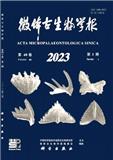
微体古生物学报
北核,CSCD,科核,高T2
CN中文-季刊影响因子0.718
-
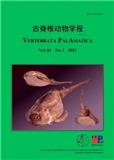
古脊椎动物学报(中英文)
北核,CSCD,科核,高T1
CN中文-季刊影响因子0.7
-

植物科学学报(原:武汉植物学研究)
北核,CSCD,科核,武A-
CN中文-双月刊影响因子1.589
-
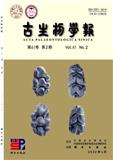
古生物学报
北核,CSCD,科核,高T1,武B+
CN中文-季刊影响因子0.83
-
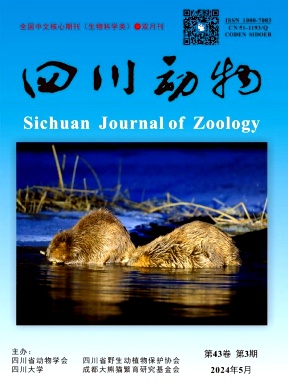
四川动物
北核,科核
CN中文-双月刊影响因子1.24
-
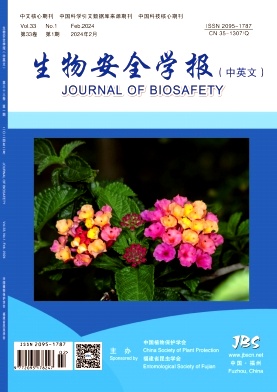
生物安全学报(中英文)(原:华东昆虫学报)
北核,科核,CSCD扩
CN中文-季刊影响因子1.247
-
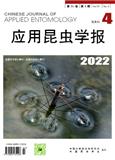
应用昆虫学报(原:昆虫知识)
北核,CSCD,科核,武A
CN中文-双月刊影响因子1.836
-
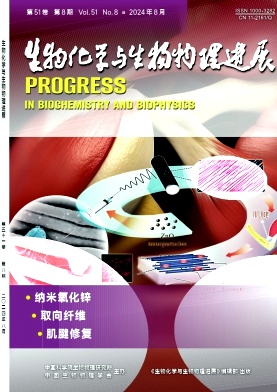
生物化学与生物物理进展
北核,CSCD,科核,武A-
CN中文-月刊影响因子1.167
常见问题
-
仿生工程学报杂志社官网、联系方式是什么?
仿生工程学报杂志社官网:http://jbe.jlu.edu.cn/
投稿网址:https://www.editorialmanager.com/jben联系电话:0431-85095180;85094074
投稿邮箱:fsxb@jlu.edu.cn -
仿生工程学报杂志是核心期刊么?
仿生工程学报是核心期刊,级别是:CSCD,科核,EI(中国2024), 是:生物科学分类下的知网目次,万方目次,维普目次收录的期刊。
-
请问你们是仿生工程学报杂志社吗?
我们不是《仿生工程学报》杂志社。本站主要从事期刊信息展示与期刊推荐,不是任何杂志官网,直投稿件请联系杂志社。本站仅提供免费的学术指导、论文辅导、期刊投稿信息整理收集服务。
-
你们指导服务后可以保证文章被发表吗?
期刊发表的成功与否,主要取决于文章内容的质量。编辑老师会根据研究领域、创新性等多因素进行考量。我们会帮助您理解期刊的发表要求,助力提升发表几率,从而增加发表的机会。
-
晋级论文能否在报纸上发表?
在学术界,论文的发表往往被视为研究者职业发展的重要一环。晋级论文,即为了获得更高职称或学术地位而撰写的学术论文,通常需在专业期刊上发表。然而,许多人可能会问
